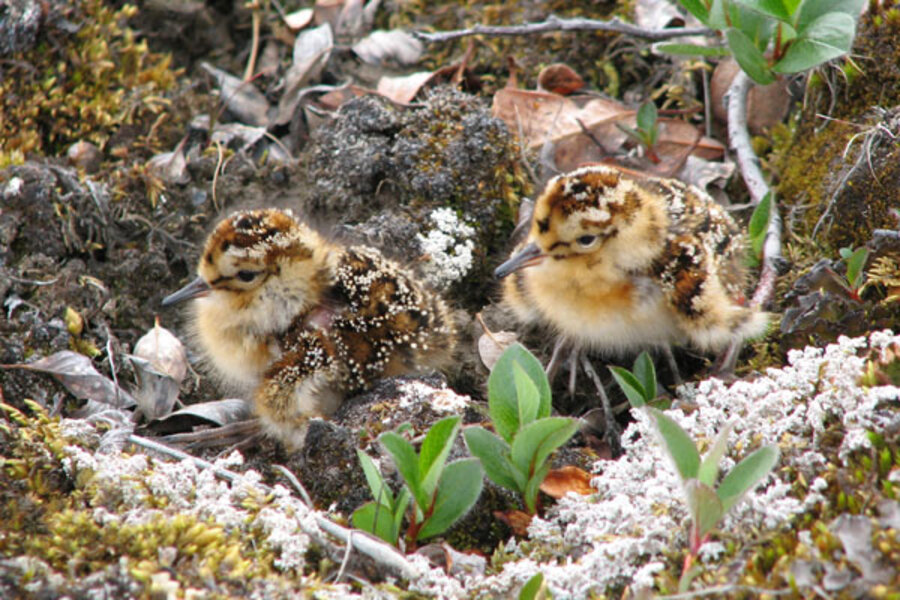Why birds migrate to the Arctic
Loading...
Why don’t migratory birds just stay home? Why do they travel tens of thousands of miles — from the tip of South America to the Arctic, for example — and back every year?
By any measure, these trips are long, arduous, and costly. Migratory birds risk storms, predators, and fatigue, to say nothing of humans with guns. And the farther north they nest, the more it costs metabolically just to be there.
Scientists have long assumed that birds make these trips because summering grounds at the top of the world offers some advantage. Whatever the costs are, in other words, the migratory birds must be more than compensated by some quality unique to the Arctic.
Indeed, with constant sunlight fueling plant growth, the Arctic summer is notable for its explosion of life. And scientists have long thought that this abundance of resources — as well as a relative lack of competition for them — has something to do with enticing birds to (evolve to) migrate there.
The extreme environment of the far north also has fewer parasites. Traveling to environs with fewer parasites might be well worth the price of the voyage. A large parasite load can take quite a toll.
Now, a new study in the journal Science emphasizes another reason the long voyage may be worth it for birds: fewer predators.
Titled “Lower Predation Risk for Migratory Birds at High Latitudes," the study finds that, the farther north birds go in the Arctic, the lower the risk of predation. Fewer predators mean that vulnerable young have greater chance of survival. Even accounting for the huge energy cost of the long voyage, having young in the Arctic improves reproductive success.
Over the course of two summers, the researchers measured predation of 1,555 artificial nests along a 2,080-mile (3,350-kilometer) corridor between the southern part of Canada's Hudson Bay and the northern part of Ellesmere Island, which is near Greenland.
Predation risk decreased by 3.6 percent for every degree latitude between 53 degrees N. and 82 degrees N. The risk of predation was more than twice as high at the southern part of the study area compared to the northern.
“These results provide evidence that birds migrating farther north may acquire reproductive benefits in the form of lower nest predation risk,” write the authors.
An accompanying article entitled “Explaining Bird Migration” offers some context. More than anywhere else, Arctic ecosystems are shaped by predator-prey interactions, say the authors. That’s partly because there are so few species to begin with. The few species that can survive the harsh conditions — lemmings, arctic fox, and snowy owls, among others— are, by definition, major players in the ecosystem.
The relative simplicity of these ecosystems works to migrating birds’ favor — at least most of the time, the authors surmise.
Lemmings, a major prey species in the Arctic, go through three- to four-year boom and bust cycles. When lemmings abound, predators likely leave waterfowl alone. But when lemmings are scarce, predators turn to the shore birds. These authors argue, therefore, that migrating north only really works where there are lemmings to keep foxes, owls, and other predators distracted (or fed). The lemmings’ sacrifice makes the birds’ trip worthwhile.
Also in bird migration news this week, the arctic tern was crowned "king of the commuters."
"A high-tech tracking survey has revealed that the annual migration of the Arctic tern is the longest in the animal kingdom – with some birds flying the equivalent of three journeys to the moon and back over their lifetimes," reports New Scientist.





